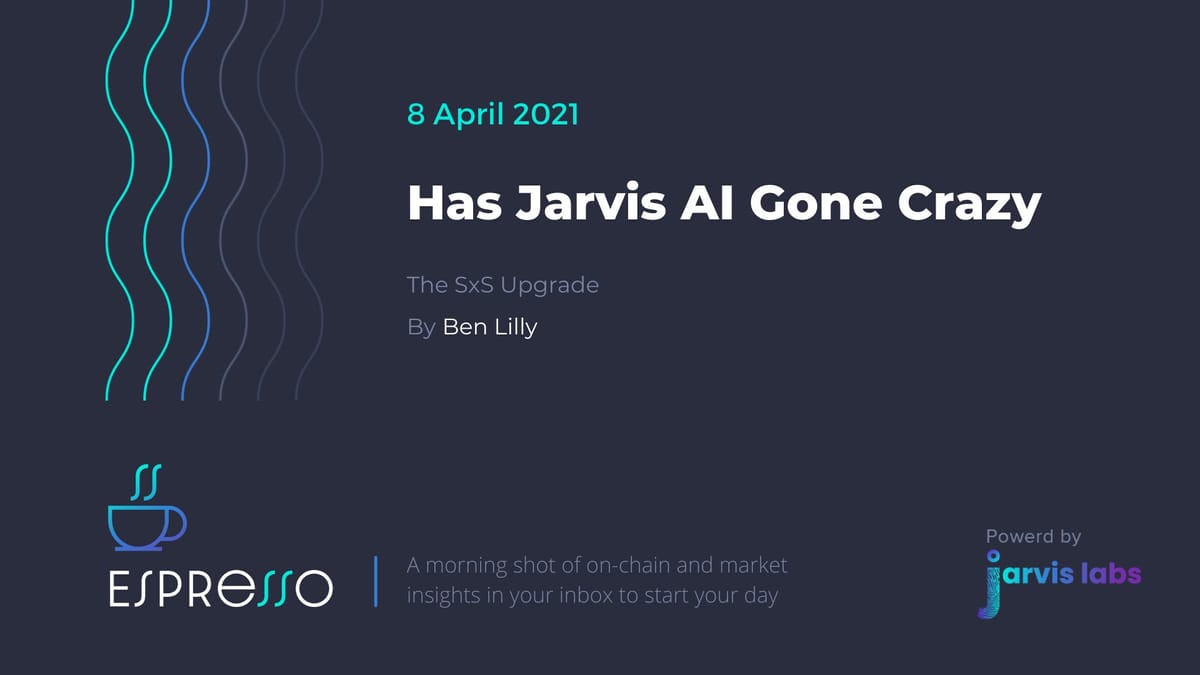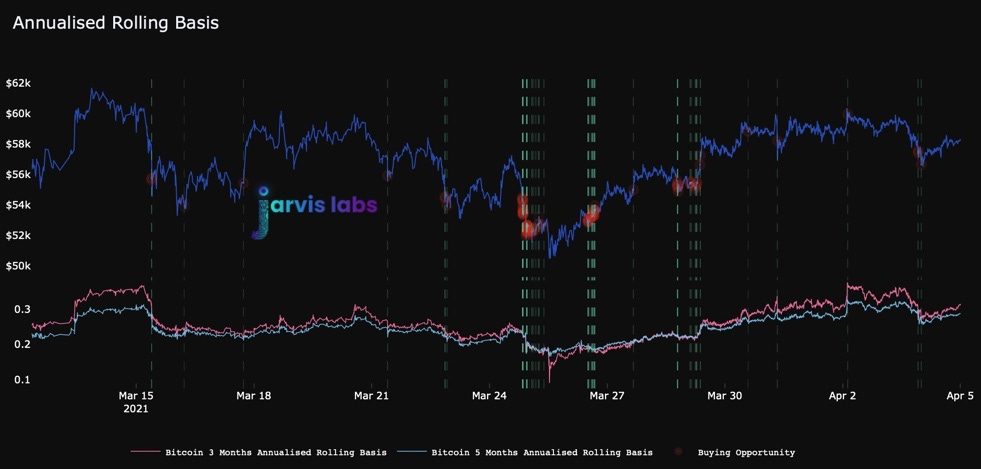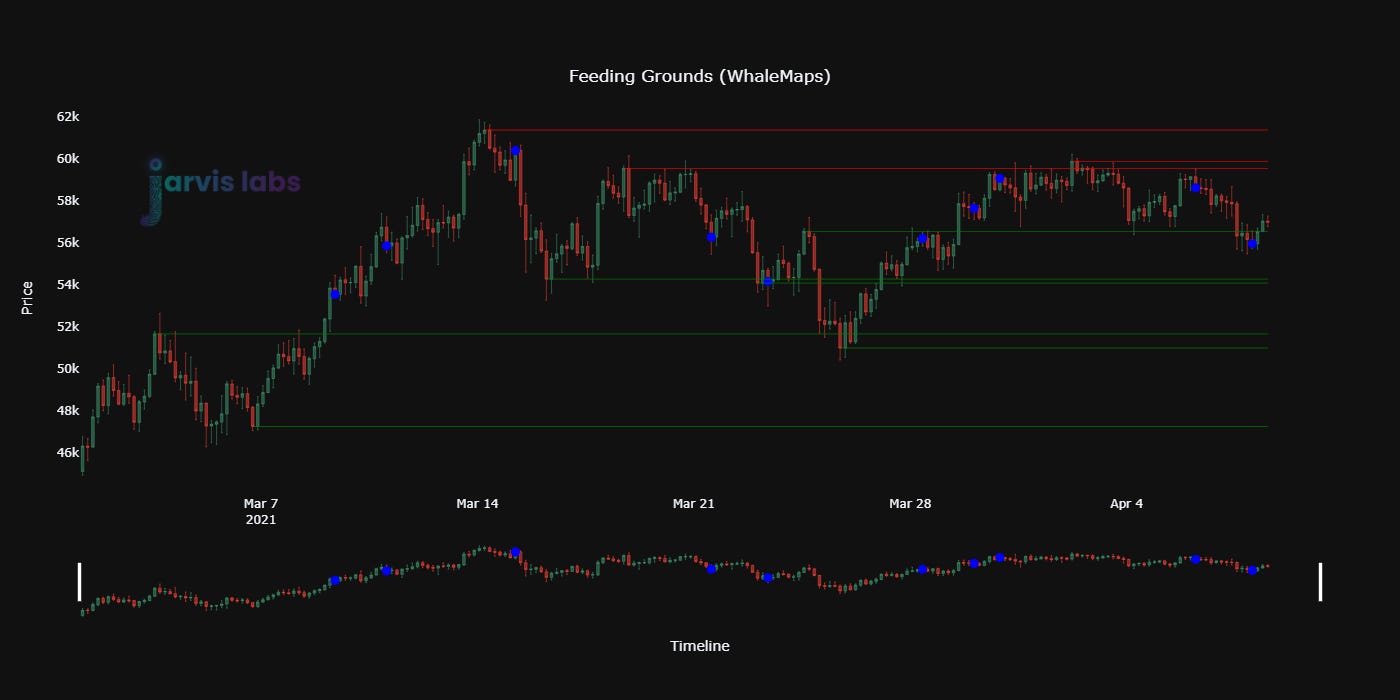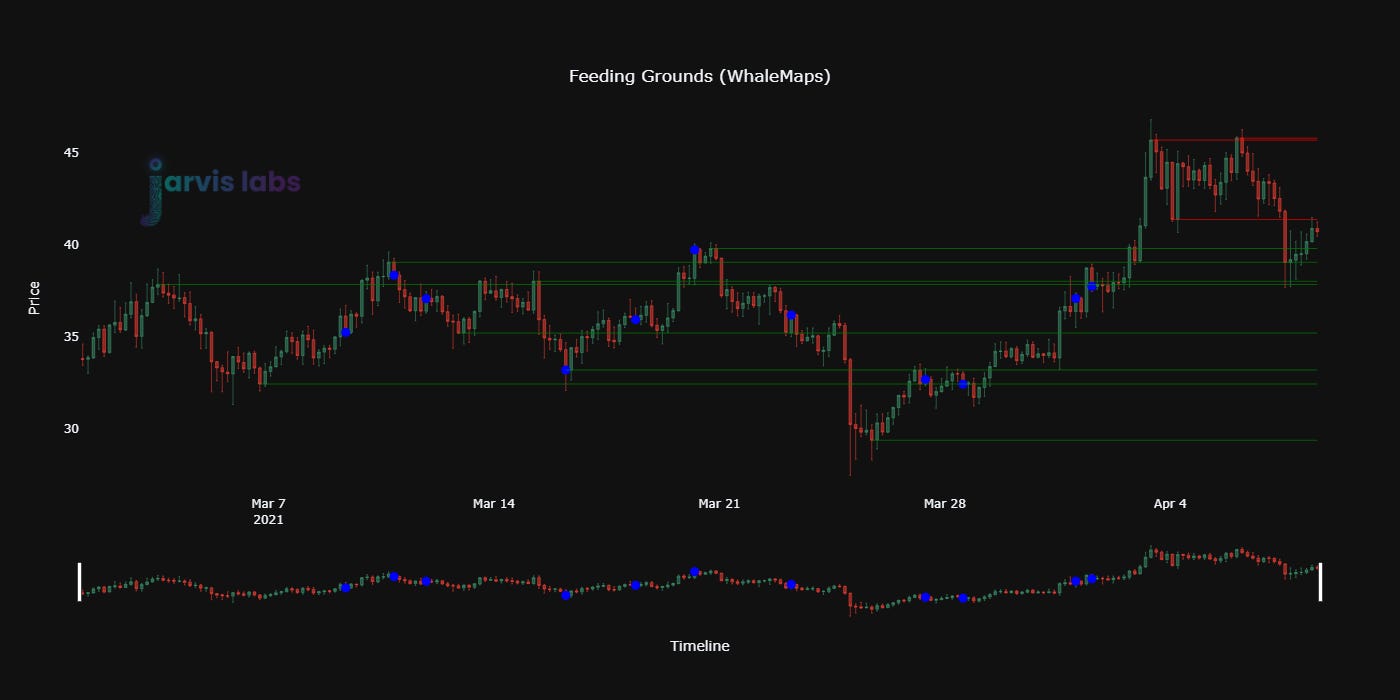Has Jarvis AI Gone Crazy
The SxS Upgrade

We’ve gotten a few recent inquiries on the way Jarvis AI (Artificial Intelligence) is behaving.
Is Jarvis AI ok? Do you think the pictures in this screenshot are normal?
For a bit of context… We update our clients regularly. Topics that we touch on day-to-day vary quite a bit.
Occasionally we share signals which users can act upon using their personal accounts. These signals are on assets that might not fit the risk profile or liquidity profile that Jarvis AI requires.
Or we might make an announcement or discuss some house cleaning items.
But of course, we know not everybody reads each alert. After all, we are all bombarded with information, data, and news every minute of the day. There’s simply just too much to keep track of.
It’s in part how Jarvis AI got its start… It was built to cut through the noise to find tradable signals.
So again, the fact some users missed the announcement last month is no surprise. What was a surprise was the feedback!
Asking if Jarvis AI was acting ok might seem like a negative at first… After all Jarvis AI was a machine and it’s supposed to operate with a certain level of predictability. But in reality… It was the moment we knew our first major upgrade of the year was about to raise some eyebrows.
The instance that raised eyebrows was when six trades were entered simultaneously. Our clients hadn’t experienced it before, and in the breakdown below, our team will dive into how this new strategy of multiple tokens is so effective and how Jarvis AI determines which tokens to take a position in.
In fact, we’re already up 9.4% (while bitcoin is down more than 2%) since we deployed it about two weeks ago. And based upon our backtesting and current success, we think this might be our best quarter yet.
Why? Because we’re trading with more precision and less risk.
But before we get into the details of this upgrade, let’s cue up the cautionary language… Because whether it’s trading or investing, past performance is no indication of future performance.
And while we believe our risk management is superior, the truth of the matter is the loss of capital is very real. And this is why we take our job seriously.
So without further ado, let’s show you how serious we take it, and why we are so excited about our recent Q1 upgrade called SxS.
(We understand a lot of this material is pretty abstract and technical, so we really did try to simplify it. If you have any questions, please don’t hesitate to drop us a line or reply in the comments below.)
The SxS Upgrade
The double barrel shotgun allows a shooter to fire two shells in quick succession with greater precision.
In a broad sense, double barrels means the shooter gets two rapid ‘actions’ for every opportunity. And since he or she gets two shots, they can customize how the first and second shot perform. This enables the creation of very specific strategies in how the shooter prepares each shell.
For example, if the shooter expects a bird to be flying away from them after the first shot, the second shell might be packed in such a way where it can travel further with less dispersion or spray. In turn, this can improve the overall hit rate.
When borrowing this example for trading, we can see where a double barrel like strategy can be helpful in reducing risk, raising performance, and improving speed. And it’s a strategy that’s part of this most recent upgrade.
It’s why we felt a name associated with the side by side (SxS) double barrel shotgun best embodied the latest upgrade. It makes use of tailor made strategies for the given situation while entering multiple trades simultaneously.
Now that you know where the SxS Upgrade name comes from, let’s dive into the details of the upgrade.
We broke it down into three sections. These include upgrades in how Jarvis AI executes trades, new ChainPulse models that help determine trades, and database improvements to the overall system.
Let’s first get into the AI improvements this quarter...
AI Execution
- Feature One - PPO
The first improvement is called Proximal Policy Optimization (PPO), and it’s the speed component of the SxS Upgrade.
In machine learning, supervised learning is used to train a model with input data. This data is then forward tested, validated, and used as the model going forward. It’s how we traditionally think of modeling.
Unsupervised learning on the other hand is where the model learns by itself. It does this by using the input data as a result of its actions via trial and error. This can be very beneficial as the model can find patterns that were previously unknown. It’s what really allows AI to realize immense potential.
Now, the unsupervised learning is the approach we employ for making trading decisions. The main drawback of this method is that it can be computationally intensive and result in slow decision making. That’s because the machine goes through all of its data when trialing in order to determine if a trade is likely to result in a positive outcome. This intense computation results in slowness, and can mean missing out on trades during impulsive moves.
We saw this most recently when Elon Musk pumped the market.
In order to have the benefit of unsupervised learning and be able to execute fast enough to take advantage of an Elon Musk pump, PPO was employed.
PPO cuts down on the computation by optimizing the number of steps involved in determining whether to execute a trade or not without sacrificing performance.
This means Jarvis AI can act faster in highly volatile times.
The way we described PPO was very surface level. If you want to learn more about PPO and why we think it’s a great fit, here’s a recent journal article on the subject.
- Feature Two - Optimized Dispersion
The second improvement to the AI system is what we call Optimized Dispersion.
Think of this as the second shell in the shotgun. It’s a custom hedge strategy which improves the hit rate.
The trading system gets data from bitcoin, ERC-20 tokens, Ethereum and other blockchains across various pairings as well as on various markets. And these signals might spring up on dozens of tokens almost simultaneously, which makes it near impossible to trade them all.
Instead of taking the best of the breed when this situations arises (like a single shot rifle), we opted for a dynamic hedging portfolio approach to the trade in order to reduce risk while maximizing upside.
To do this we built correlation matrices using Pearson Coefficient. You saw one of these last week. It was a DeFi correlation matrix. It shows the positive, neutral, and negative correlations between pairs.
While this model is great, it tends to generate false positives since these correlations might not last more than a short period of time.
To tackle the issue we implemented a three step unsupervised learning approach.
- Dimensionality Reduction
- OPTICS Clustering
- Rules of Disqualification
These three steps lets the AI better understand the tokens that are behaving similarly while eliminating the pairs unsuitable for our risk parameters.
Further, this method is rather intense in terms of computation.
To lessen the load we implemented a Greedy Algorithm and Minimum Profit Optimization. This cut costs and improved performance by 38% on portfolio pairs.
If you want to learn more about Greedy Algorithms and Minimum Profit Optimization, here’s some helpful material: here and here.
ChainPulse Models
The three models below help Jarvis AI determine trades. We plan to publish these on our future ChainPulse platform and paid subscription.
- Recoil Meter
You’ve likely seen this in the charts we tend to publish. It looks like this:

This is our hybrid risk meter that takes into account funding rates, the change in funding rates, and if the onchain transactions are in profit or loss.
The way we interpret the chart is in the amount of potential recoil that exists in the market at any moment.
If traders are entering longs and funding rates are sky high… And these traders are experiencing a loss in their account, the chance for these traders to close their trades and set off a cascading effect is likely.
That’s opposed to the situation where traders are in profit, funding rates are tame, and they aren’t changing very fast. This is a healthier market to open trades in.
This meter cues us and Jarvis AI on whether the market is healthy or too risky for entering a futures trade.
- Snapback Signal
Contango and backwardation. These are terms that apply to the futures market. Typically a futures contract that settles in the future, trades at a higher price than the spot market. When this exists in the market, it’s called being in Contango.
When the market shows futures prices below the spot price, we call is backwardation.
To dive into the details of why this all happens requires me to spill a lot of ink. So instead of taking up too much time, it’s important to realize when we pair the magnitude of these two situations with other signals, we get a strong mean revision signal.
This means price snaps back from being too oversold or overbought, which is why we call it the snapback signal. Here’s what this chart looks like.

- Feeding Grounds
People love whalemaps. These charts allow users to see the price levels whales transact at. More importantly, it gives users an idea what price levels are likely to be defended.
Based upon these maps we came up with our own model using our labeled wallets in conjunction with proprietary on-chain and transaction data.
We then went a step further by pairing this model up with candlestick charts to gain an understanding of where these moments happened in relation to technical analysis… Turns out, there was heavy confluence.
In the chart below you’ll see support and resistance lines on a candlestick chart with circles that depict large transactional volume from wallets of importance. You’ll notice price tends to reverse in these areas of interest.
BTCUSDT

DOTUSDT

We call it the Feeding Grounds chart since we can see where previous whale activity took place. Which is also where it’s likely to take place again.
What’s more… We managed to implement this model across 50 different pairs.
Database Improvements
The last section focuses on the data we use. This helps improve our models and ultimately our performance.
- New Blockchains
On-chain data for Bitcoin and Ethereum is plentiful. There are literally dozens of providers you can use. However, outside of the two largest cryptos, on-chain data for other blockchains is difficult to source and expensive.
Because of this barrier, we knew there was untapped alpha waiting to be mined.
In this upgrade we introduced on-chain data from Cardano, Cosmos, and Polkadot blockchains to Jarvis AI.
We’ve already seen successful trades as a result of these additions.
- Wallet Acquisitions
Data is the modern day oil. And for on-chain analysts labelled wallet data is our top tier oil. It’s why we occasionally acquire data in the market.
Our latest acquisition added 1.5 million labelled wallets to our database. We have over 20 million to date. The recent data holds information on top traders, venture funds, and 550 ERC-20 tokens across major DEX platforms.
We focused on this batch of data because DeFi is very popular right now, and know the entities behind the major moves helps us determine future price action.
Q2 Starts Now
Every single implementation and upgrade this quarter is state-of-the art. We literally don’t know any algorithmic trading system in crypto that is this robust. Not remotely close.
And while AI execution upgrades improve how effectively Jarvis designs a dynamic trading portfolio and trades it, the reliability of our ChainPulse models is what makes this so powerful. It’s what determines when a trade is available to take.
Now, while we really enjoyed the SxS Upgrade, we are also very excited to bring these improvements to you via ChainPulse. Which is what our main focus is for Q2.
We plan to unveil to you the best trading analytics and signal platform in crypto.
Stay tuned. And thank you for being a part of our journey…
- Jarvis Labs





